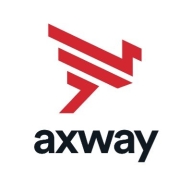

Axway AMPLIFY API Management and webMethods.io are competitive products in the API management solutions category. webMethods.io seems to have the upper hand due to its extensive features, though Axway offers notable strengths in pricing and support.
Features: Axway AMPLIFY API Management offers advanced traffic control, enhanced security protocols, and comprehensive API lifecycle management. webMethods.io provides strong integration capabilities, flexible automation tools, and extensive data transformation options.
Room for Improvement: Axway could improve its integration capabilities, user interface simplicity, and expand automation features. webMethods.io could benefit from enhancing security measures, offering more intuitive design features, and reducing initial setup complexity.
Ease of Deployment and Customer Service: Axway AMPLIFY API Management ensures a straightforward deployment process with robust customer support. webMethods.io shines with its cloud-native platform, enabling rapid deployment and scalable solutions, alongside well-regarded responsive customer service.
Pricing and ROI: Axway AMPLIFY API Management has a competitive pricing model with a focus on long-term ROI through efficient resource management. webMethods.io, despite higher initial costs, delivers substantial ROI with its operational efficiency and scalability.
| Product | Market Share (%) |
|---|---|
| webMethods.io | 2.4% |
| Axway AMPLIFY API Management | 1.6% |
| Other | 96.0% |


| Company Size | Count |
|---|---|
| Small Business | 4 |
| Midsize Enterprise | 1 |
| Large Enterprise | 7 |
| Company Size | Count |
|---|---|
| Small Business | 23 |
| Midsize Enterprise | 11 |
| Large Enterprise | 63 |
Axway API Management Plus combines API lifecycle management, secure integration services, monitoring and analytics to help you innovate faster and heighten ecosystem engagement. It is part of the Axway AMPLIFY data integration and engagement platform, which also includes unified app development for mobile to provide a complete solution for rapid change and innovation.
webMethods.io Integration is a powerful integration platform as a service (iPaaS) that provides a combination of capabilities offered by ESBs, data integration systems, API management tools, and B2B gateways.
We monitor all API Management reviews to prevent fraudulent reviews and keep review quality high. We do not post reviews by company employees or direct competitors. We validate each review for authenticity via cross-reference with LinkedIn, and personal follow-up with the reviewer when necessary.